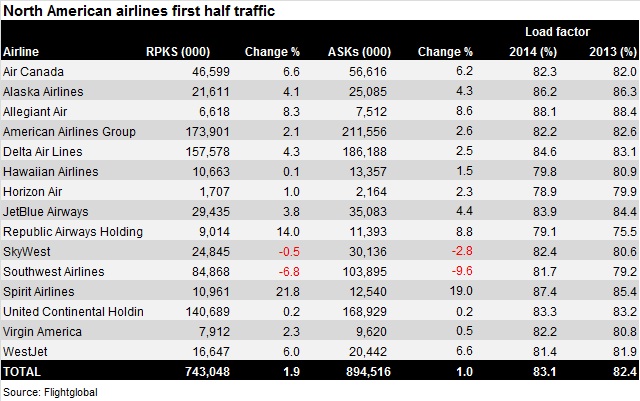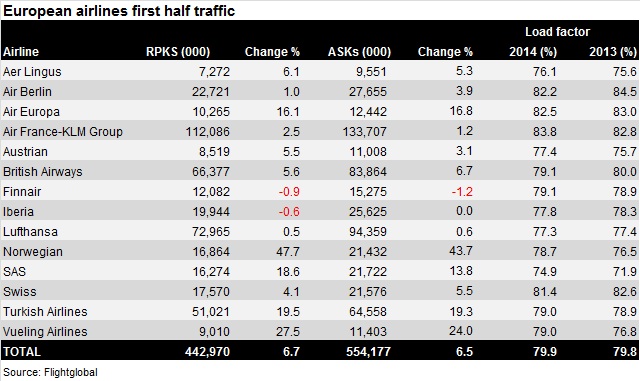Airline passenger traffic among leading carriers grew 4.7% in the first half of the year, as the industry continues its recent return to more steady traffic growth.
The increase in traffic slightly outpaced the extra capacity, helping to lift the first-half collective load factor among leading carriers to 80.5%.
The pattern of moderate growth for network carriers in mature markets and quicker expansion among low-cost sector operators as well as those in emerging markets has become clearer.
Much of this divide is driven by the trumpeted tight capacity discipline of the US majors.
Delta Air Lines and the US Airways-enlarged American Airlines Group both lifted capacity around 2.5% – with Delta enjoying a return of more than 4% passenger growth. United Continental’s capacity and traffic stayed flat.
But this discipline was evident across the North American skies. Carriers increased capacity just 1% in the first half, lifting traffic 2%. Ultra-low-cost carrier Spirit Airlines was the only airline to add capacity at double-digit rates.

The evolving Canadian market also grew quickly, at more than 6%. Air Canada and WestJet have both been branching out into new operations with Rouge and Encore, respectively.
Traffic among those Latin American carriers to have so far reported traffic data was on the up in the first six months of the year.

Restructuring – notably on short-haul flights – is further evident in the slow growth of many European carriers. Heavy cuts at some airlines, though – such as Iberia – are starting to give way to modest growth.

Europe’s low-cost sector carriers like Norwegian and Vueling continue to grow rapidly, although EasyJet and Ryanair increased passengers more moderately at 7% and 4%, respectively. Norwegian’s strong increase in revenue passenger-kilometres and available seat-kilometres also reflects its expansion of long-haul operations. Elsewhere, there was opportunistic growth from the likes of Air Europa on long-haul. However, concerns over yields continue to dog carriers.
Asia-Pacific network carriers continued to grow at higher-than-average rates in the first half – albeit with the notable exception of Thai Airways.
Political turmoil in the country has hit travel demand, prompting a sharp decline in traffic at the national carrier and an eight-point fall in load factor in the first six months of the year.

The region’s carriers remain the most exposed to struggling air freight demand, which continues to show a relatively slow rate of improvement.
Source: Airline Business























